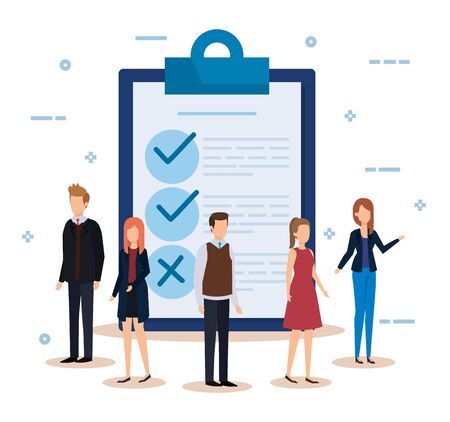1. Understanding the Claims Adjustment Process
When you file an insurance claim in the United States, your case goes through a process called “claims adjustment.” This is how insurance companies determine if your claim is covered and, if so, how much they will pay. Let’s break down how this works and introduce some of the key terms and people you’ll encounter along the way.
What Is Claims Adjustment?
Claims adjustment is a step-by-step review of your claim by an insurance company. The main goal is to evaluate your loss, check your policy coverage, and decide on a fair settlement amount. This process applies to many types of insurance, like auto, home, health, and life.
Who Is Involved?
| Role | Description |
|---|---|
| Policyholder | You—the person who owns the insurance policy and files a claim. |
| Claims Adjuster | An employee or contractor hired by the insurance company to investigate and settle claims. Also called a “claims examiner” or “loss adjuster.” |
| Appraiser | A specialist who assesses the value of damaged property, such as vehicles or homes. |
| Third-Party Administrator (TPA) | An outside company that helps process claims for certain types of insurance, often used by employers with self-funded plans. |
Common Insurance Terms You Should Know
| Term | Meaning |
|---|---|
| Deductible | The amount you have to pay out-of-pocket before your insurance covers the rest. |
| Premium | The amount you pay regularly to keep your insurance policy active. |
| Coverage Limit | The maximum amount your insurer will pay for a covered loss. |
| Exclusion | A situation or item not covered by your policy. |
| Settlement | The amount paid to resolve your claim—can be full or partial payment. |
| Claimant | The person making the claim (usually the policyholder or someone affected by the incident). |
The General Steps in Claims Adjustment
- Claim Filing: You notify your insurance company about the loss or damage.
- Acknowledgment: The insurer confirms receipt of your claim and assigns an adjuster.
- Investigation: The adjuster reviews documents, interviews people involved, and inspects damages if needed.
- Evaluation: The adjuster determines whether your loss is covered and estimates costs.
- Settlement Offer: The insurer makes a payment offer based on their findings.
This overview should help you understand what happens behind the scenes when you submit a claim in the U.S., as well as some common language and roles in the process.
2. Filing Your Insurance Claim
Step-by-Step Instructions for Filing a Claim
Filing an insurance claim in the U.S. can feel overwhelming, but breaking it down into simple steps makes the process much easier. Here’s how to get started:
Step 1: Gather Essential Documentation
Before contacting your insurance company, collect all necessary paperwork and information. This ensures your claim goes smoothly from the start.
| Type of Claim | Key Documents Needed |
|---|---|
| Auto | Photos of damage, police report (if applicable), repair estimates, proof of insurance, vehicle registration |
| Homeowners/Renters | Photos of loss or damage, list of damaged items, receipts or proof of ownership, police/fire report (if needed) |
| Health | Medical bills, explanation of benefits (EOB), doctor’s notes or reports, insurance ID card |
| Life | Death certificate, policy documents, beneficiary identification |
Step 2: Notify Your Insurance Provider Promptly
Contact your insurance company as soon as possible after an incident occurs. Most providers have a dedicated claims hotline or online portal. Be ready to provide:
- Your policy number
- Date and details of the incident
- Description of damages or losses
- The documentation you gathered in Step 1
Step 3: Submit Your Claim Form
Your insurer will provide a claim form—either online or by mail. Fill it out carefully and attach all required documents. Double-check your contact information so the adjuster can reach you easily.
TIPS FOR SUBMITTING YOUR CLAIM:
- If filing online, scan and upload clear copies of all paperwork.
- If mailing documents, use certified mail or request tracking for peace of mind.
- Keep copies of everything you send to your insurer.
Step 4: Navigate the Initial Intake Process
An insurance representative or claims adjuster will review your submission. They may call to ask follow-up questions or request additional information. Respond quickly and honestly to keep things moving forward.
- Be prepared for a home visit or inspection if you’re filing a property claim.
- For auto claims, you might need to take your car to an approved repair shop for assessment.
- For health claims, stay in touch with your healthcare provider’s billing office for any extra paperwork.

3. Working with the Claims Adjuster
What to Expect When Assigned a Claims Adjuster
After you file your insurance claim, your insurance company will assign a claims adjuster to handle your case. The adjuster is your main point of contact and is responsible for investigating the details of your claim, reviewing documentation, and determining the amount the insurance company will pay. Here’s what typically happens:
| Step | What Happens |
|---|---|
| Initial Contact | The claims adjuster will reach out by phone or email to introduce themselves and explain their role. |
| Information Gathering | The adjuster will ask for relevant details about the incident, such as photos, receipts, and any police or medical reports. |
| Inspection (if needed) | If its a property claim (like auto or home), they may schedule an in-person inspection or request a virtual walk-through. |
| Ongoing Communication | The adjuster will keep you updated on the status of your claim and may ask for additional information. |
How to Communicate Effectively with Your Claims Adjuster
- Be Prompt: Respond quickly to calls, emails, or requests for information. This keeps your claim moving smoothly.
- Be Honest: Always provide accurate and truthful information. Misrepresenting facts can delay or jeopardize your claim.
- Be Organized: Keep all documents—such as receipts, repair estimates, and correspondence—in one place so you can easily share them if asked.
- Ask Questions: Don’t hesitate to ask your adjuster to clarify anything you don’t understand about the process or coverage.
- Take Notes: Write down important details from each conversation including dates, names, and what was discussed.
Sample Questions to Ask Your Claims Adjuster
| Topic | Example Question |
|---|---|
| Timeline | “How long do you expect this process to take?” |
| Documentation | “Is there any other paperwork I should provide?” |
| Status Updates | “How will I be notified of updates or decisions?” |
| Payout Details | “When and how will I receive payment if my claim is approved?” |
Tips for Providing Necessary Information
- Gather Everything Upfront: Before speaking with your adjuster, collect all relevant documents and evidence related to your claim.
- Email Copies: Send scanned copies or clear photos of documents instead of originals whenever possible.
- Create a Claim Folder: Use a physical folder or digital folder on your computer to store everything related to your claim in one place.
- Follow Up in Writing: After phone conversations, follow up with an email summarizing what was discussed for your records.
- Double-Check Submissions: Make sure all forms are filled out correctly and completely before submitting them to avoid delays.
4. Assessment, Investigation, and Documentation
Once a claim is filed, insurance companies in the U.S. begin a careful process to evaluate the loss and determine what coverage applies. This stage is crucial because it helps both the insurer and the policyholder understand the extent of the damage or loss, and what compensation may be due.
How Insurance Companies Assess Losses
The first step is assessment. An insurance adjuster—someone who works for or with the insurance company—will review your claim. This may involve:
- Contacting you to discuss what happened
- Visiting the site of the incident (like your home after a fire or your car after an accident)
- Reviewing photos, videos, or other evidence
- Consulting repair shops, contractors, or medical professionals if needed
Requirements for Evidence and Supporting Documents
To speed up your claim and help the adjuster make a fair decision, you’ll need to provide certain documents. Here’s a table of common evidence required for different types of claims:
| Type of Claim | Common Documents Needed |
|---|---|
| Auto Insurance | Police report, photos of damage, repair estimates, proof of ownership (title/registration) |
| Homeowners/Renters Insurance | Photos/videos of property, inventory lists, receipts for items lost/damaged, police/fire reports if applicable |
| Health Insurance | Medical bills, explanation of benefits (EOB), doctor’s notes, prescription receipts |
| Life Insurance | Death certificate, policy documents, beneficiary information, supporting medical records (if needed) |
The Investigation Process in the U.S.
The investigation process is designed to verify all details related to your claim. The adjuster may:
- Interview witnesses or others involved in the incident
- Request additional documentation if anything is unclear or missing
- Work with specialists such as engineers or medical experts for complex cases
- Check for any signs of fraud or misrepresentation (a standard part of the process)
Your Role During Assessment and Investigation
You play an important role by providing clear information and responding promptly to requests from your insurance company. Keeping records organized and being honest about what happened will help ensure a smoother experience throughout this stage.
5. Settlement, Appeals, and Next Steps
Understanding Possible Outcomes
After your insurance claim has been reviewed and adjusted, you’ll receive a settlement offer from your insurance company. This is their proposal for how much money they will pay out based on the terms of your policy and the damages assessed. It’s important to know that settlement outcomes can vary:
| Outcome | What It Means |
|---|---|
| Full Approval | Your claim is accepted, and you receive the full amount requested (up to policy limits). |
| Partial Approval | Your claim is partially approved; you receive less than requested because of policy limits or exclusions. |
| Denial | Your claim is denied, usually due to lack of coverage or insufficient evidence. |
What to Do If You Disagree With the Settlement Offer
If you feel the settlement offer is too low or unjustified, don’t feel pressured to accept it right away. Here are some steps you can take:
- Review the Explanation: Carefully read the insurer’s explanation for the settlement amount.
- Gather Supporting Documents: Collect receipts, estimates, photos, and any other documentation that supports your claim.
- Contact Your Adjuster: Discuss your concerns directly with your claims adjuster. Sometimes misunderstandings can be resolved with additional information.
- Request a Reconsideration: You can formally ask the insurer to review their decision if you believe there’s been a mistake.
Your Options for Appeal or Mediation Under U.S. Insurance Regulations
If direct communication doesn’t resolve the issue, U.S. insurance regulations provide several options:
| Option | Description | How to Start |
|---|---|---|
| Internal Appeal | You formally request the insurance company to re-examine your claim. | Submit a written appeal following instructions in your denial letter or policy documents. |
| Mediation | A neutral third party helps both sides reach an agreement without going to court. | Contact your state’s Department of Insurance or ask your insurer if they offer mediation services. |
| External Review/Regulatory Complaint | You can file a complaint with your state’s Department of Insurance for a regulatory review. | Visit your state insurance department’s website for forms and instructions. |
| Legal Action | If all else fails, you can seek legal counsel and consider taking the matter to court. | Consult with an attorney who specializes in insurance law before proceeding. |
Tips for Navigating Appeals and Settlements
- Keep copies of all correspondence and documents related to your claim.
- Know your deadlines; appeals often have strict time limits under state law.
- If needed, consult with a public adjuster or consumer protection agency for guidance.
- Your state’s Department of Insurance is a valuable resource if you need help understanding your rights or filing complaints.


